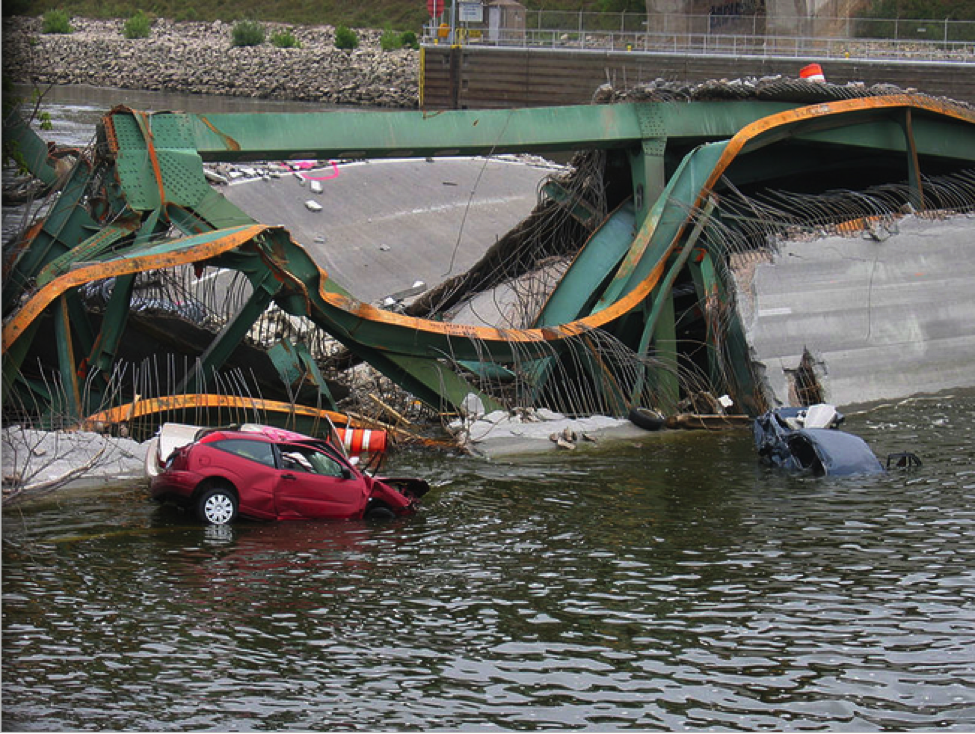Infrastructure in the United States is in a state of disrepair. The American Society of Civil Engineers 2013 Report Card for America’s Infrastructure stamps US infrastructure with a letter grade of D+, with an estimated $3.6 trillion investment needed by 2020 to bring that grade to a B.[1] How will the US finance the necessary improvements to the ailing infrastructure? In early American history, private firms were chartered to build infrastructure such as roads, bridges, and highways. However, since the late 19th century, state and federal governments have taken over the operation and finance of public works projects. Although construction projects can be completed by public or private entities, the financing mechanism for any project can be a complex process. Infrastructure is largely seen as a public good, and as a result there are significant challenges in all finance strategies available to fix the broken roads, rails, bridges, ports, schools, energy systems and other infrastructure.
Public dominance in the building, maintaining, and operating of infrastructure creates a taxation system as the primary monetary source of funding for such activities, with tolls and fees supplementing taxes in specific areas. The logical answer to the funding problem would be to increase taxes, or re-appropriate funds from other areas of federal and state spending to domestic infrastructure. Tax hikes and reappropriations can be dangerous for politicians to posit, for fear of alienating their constituents. Given the sequester, and the slow recovery of the American economy, neither of these options currently seem viable.
In connection with infrastructure, those in the homeland security sphere like to cite that 85 percent of critical infrastructure is owned by the private sector.[2][3][4] Although this number has been called misleading, under-representative, and flat-out incorrect, the fact remains that a majority of infrastructure is owned by private entities.[5] Logically, the infrastructure that is owned by the private sector would be fixed by the private sector. However, market forces alone do not provide sufficient incentive for private sector investment in infrastructure.[6]
For example, a shipping company operating in the Port of Los Angeles owns the scanning equipment it uses to identify possibly dangerous or hazardous packages. Although there is evidence that the current scanning equipment cannot detect certain radioactive materials, the adequate equipment would be an expensive upgrade. In order to perform this upgrade, the company would pass on the cost to the consumer, with possible delays in shipping time adding to the monetary cost. In the competitive, just-in-time, world of global shipping, this company would now be at a market disadvantage; their conscientiousness in the name of security makes them a more expensive, and therefore irrelevant, shipping option. Although the government is typically thought of as the arbiter of national security, private sector ownership of critical infrastructure creates an opportunity for partnership. In addition, vulnerable infrastructure could serve as an incentive for private companies and the government alike, since prolonged service outages can hurt the bottom line. However, despite the potential risks associated with non-investment, private companies are less likely to invest money in a problem that may not be seen as imminent, or even likely.
The government does have a variety of options to induce private spending; commonly known as “carrots and sticks,” there are penalties for failing to invest and rewards for investment. This approach could be used to avoid the problem the hypothetical shipping company ran into, by forcing all shipping companies to make the same investment in updated scanning equipment. However, this would be a regulatory process, requiring more government oversight and a heavy-handed approach to market regulation that would be hard to swallow for many who favor more limited government. Introducing more government bureaucracy into already-stagnant private infrastructure development may be counterproductive.
If public investment under current economic conditions is infeasible, and private sector investment without heavy government involvement is less than desirable, the alternative for many states is a P3 — a public-private partnership. The P3 model involves securing private funding for public works projects, thereby increasing competition, increasing finance options, creating more timely response to demand, and developing more accurate pricing.[7] There are risks involved with this model, such as higher interest rates on private loans, the potential for costly re-negotiation if something goes wrong, and the combination of deliverable-based and lifetime inflation-adjusted installments known as “shadow payments.”[8] The hybrid P3 model can bring much needed relief to American infrastructure woes, but even a complex public-private agreement does not alleviate the cost to the public. As the Congressional Budget Office notes, “Private financing is unlikely to increase the availability of funds for…projects because the revenues from taxpayers and from users…are the source of repayment regardless of the financing mechanism chosen for the project.”[9] In other words, no matter how the finance mechanism is finessed, using investors, lenders, or sponsors, the ultimate cost for public infrastructure will be placed entirely on the public.
Despite the financial challenges inherent in improving the nation’s infrastructure, there is a positive aspect hidden within the potholes — investment in infrastructure pays off. How many floods, hurricanes, earthquakes, and fires have wrecked havoc on ailing American public works systems? When the next disaster hits, be it natural or manmade, how quickly will the D+ system bounce back? How long will Americans tolerate power loss, persistent disruptive flooding, delayed public transit? Rising insurance premiums suggest trends of increasingly destructive disasters.[10] The investment in ailing infrastructure now will protect against costly renovations and reconstruction later. The immediate costs of closed roads, detours, disruptions of service, and public debt must be viewed as investment in a more stable future — delayed gratification is the operative term. Failing to make this investment in the literal foundation of American society is a costly and fatal mistake.
Josh Sternberg
International Affairs ‘15
[1] http://www.infrastructurereportcard.org/a/#p/grade-sheet/gpa
[2] http://www.dhs.gov/xlibrary/assets/nat_strat_homelandsecurity_2007.pdf
[3] http://www.fas.org/irp/offdocs/pdd/pdd-63.htm
[4] http://www.dhs.gov/homeland-security-presidential-directive-7
[5] http://www.hlswatch.com/2009/03/16/85-percent-is-wrong/
[6] http://opim.wharton.upenn.edu/risk/downloads/05-11-EMK.pdf
[7] http://www.osc.state.ny.us/reports/infrastructure/p3_report_2013.pdf
[8] “Public-Private Partnership Concessions for Highway Projects: A Primer,” Federal Highway Administration, October 2010.
[9] Congressional Budget Office, “Using Public-Private Partnerships to Carry Out Highway Projects,” January 2012.
[10] http://blog.ucsusa.org/rising-seas-and-worsening-storms-require-rethinking-flood-and-wind-insurance-203



